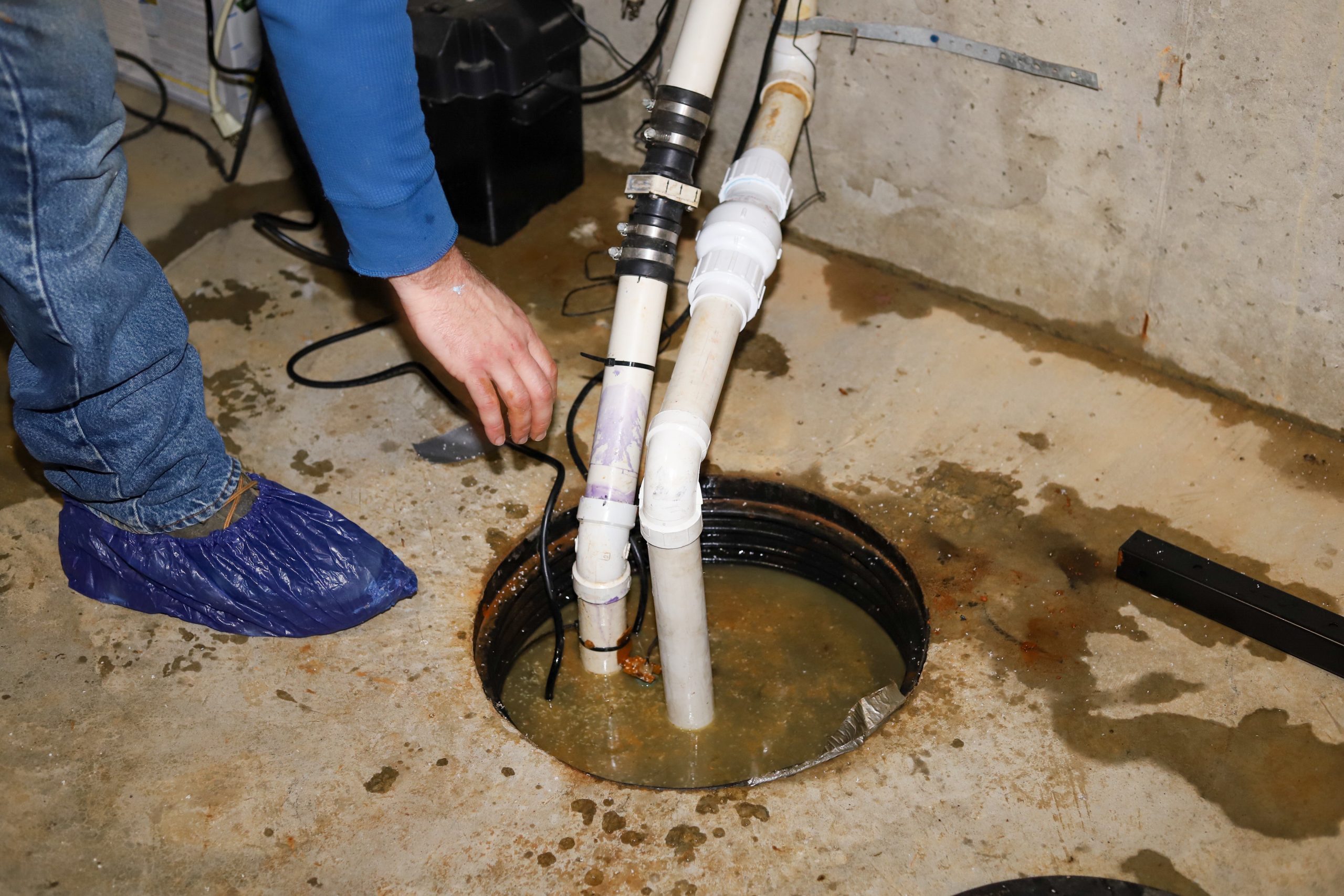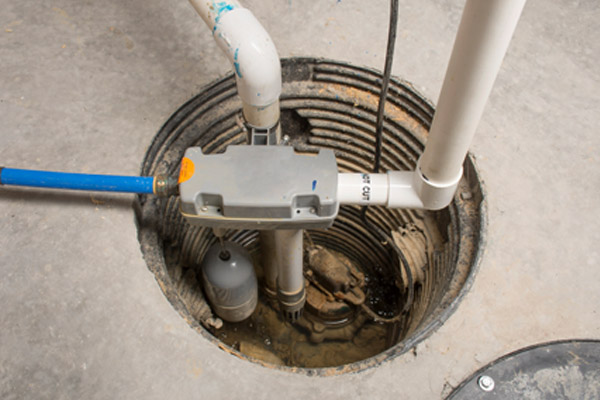The writer is making a number of good points related to How to Care for Your Sump Pump overall in this content beneath.

Sump pumps are important parts in lots of homes, particularly in locations prone to flooding or extreme dampness. They aid prevent water damage by effectively eliminating excess water from basements or crawl spaces. Nevertheless, like any other home appliance, sump pumps need regular upkeep to guarantee they operate effectively when required one of the most. Cleansing your sump pump is an essential part of its upkeep, and recognizing exactly how to do it correctly can save you from expensive repair work and prospective disasters.
Introduction
Maintaining a clean sump pump is essential for its proper functioning and long life. Overlooking this vital job can cause clogs, breakdowns, and inevitably, water damages to your building. For that reason, finding out just how to clean up a sump pump is essential for homeowners that count on these tools to keep their cellars dry and safeguarded.
Understanding the Sump Pump
Before diving into the cleaning procedure, it's essential to have a standard understanding of exactly how a sump pump functions. Generally mounted in a pit or basin listed below the cellar flooring, a sump pump consists of numerous crucial parts, including a pump, a float button, and a discharge pipeline. When water gathers in the pit, the float switch turns on the pump, which then pumps the water out via the discharge pipeline, far from the structure's foundation.
Signs of a Dirty Sump Pump
Knowing when your sump pump requires cleaning is essential for preventing prospective malfunctions. Some typical signs that show a filthy sump pump include unusual noises throughout operation, reduced water flow, and visible debris in the pit. If you notice any one of these symptoms, it's essential to clean your sump pump quickly to avoid any kind of additional issues.
Planning for Cleansing
Prior to you start cleaning your sump pump, it's important to take some security precautions. Start by shutting off the power to the pump to prevent any kind of electric crashes. Additionally, wear appropriate protective equipment, such as gloves and goggles, to secure yourself from dirt, particles, and prospective virus.
Step-by-step Guide to Cleansing a Sump Pump
Shutting down the Power
Begin by separating the power supply to the sump pump to prevent any type of crashes while cleaning.
Getting Rid Of Debris and Dust
Use a bucket or a scoop to get rid of any type of noticeable debris, dirt, or debris from the sump pit. Dispose of the particles correctly to stop it from obstructing the pump or the discharge pipeline.
Cleaning up the Pump and Float Change
When the pit is free from debris, thoroughly eliminate the pump from the pit. Examine the pump and the float button for any kind of signs of damages or wear. Make use of a soft brush or cloth to cleanse the surfaces and eliminate any type of accumulated grime.
Flushing the System
After cleaning up the pump and float button, flush the sump pit with clean water to get rid of any type of staying dirt or sediment. This will certainly help make sure that the pump operates efficiently and efficiently.
Checking for Correct Functioning
Before re-installing the pump, do a fast test to make sure that the float switch activates the pump correctly. Pour some water right into the sump pit and observe the pump's procedure. If whatever is functioning properly, you can reconstruct the pump and reconnect the power supply.
Upkeep Tips to Maintain Your Sump Pump Clean
Along with routine cleansing, there are a number of upkeep ideas you can comply with to maintain your sump pump in optimum problem:
Conclusion
Cleansing your sump pump is a crucial element of its maintenance and ensures that it operates properly when you need it one of the most. By adhering to the actions described in this guide and integrating regular maintenance right into your regimen, you can extend the lifespan of your sump pump and secure your home from water damage.
6 STEPS ON HOW TO CLEAN A SUMP PUMP PROPERLY
UNDERSTANDING SUMP PUMPS
Your sump pump plays a crucial role in protecting your home by managing and removing excess water. It primarily functions as a “shield”, guarding your basement against the damaging effects of water accumulation. The pump is housed in a sump pit in the lowest part of your basement, and its job is to pump out any water that collects there.
During heavy rainfalls or when snow melts rapidly, water can infiltrate your basement, posing potential risks like flooding, structural damage, and harmful mold growth. Here, the sump pump springs into action, pumping out the intruding water and directing it away from your home.
SAFETY FIRST
Before cleaning, remember to prioritize safety. Disconnect the sump pump from the power source to prevent any accidental electric shocks. Also, wear sturdy gloves to protect your hands from any sharp or dirty components within the pump.
REMOVE THE SUMP PUMP
After ensuring your safety, the next step is to remove the sump pump from its pit. Doing this might require careful maneuvering as you don’t want to damage any pump components. Once removed, clean the sump pit to remove any accumulated debris or sludge.
INSPECT THE PUMP
Inspect the pump for any visible signs of wear or damage. Check the power cord, float switch, and impeller housing. If any components look worn out or damaged, consider replacing them to ensure optimal performance.
CLEAN THE PUMP
Thoroughly clean the pump with warm, soapy water. Make sure to rid it of any dirt, gravel, or other debris that might impede its performance. You can use a toothbrush to clean the small, hard-to-reach parts of the pump.
REINSTALL THE SUMP PUMP
Reinstall the pump into the sump pit Make sure it’s positioned correctly to remove the water effectively Once it’s back in place, reconnect it to the power source TEST THE PUMP
Finally, pour some water into the pit to ensure the pump works correctly. It should start automatically and begin pumping out the water; if it doesn’t, check the power source and the positioning of the pump.
Remember, while cleaning your sump pump is an essential part of home maintenance, hiring a professional plumber for a thorough inspection and cleaning at least once a year is also important. This will ensure that your pump is in optimal condition, ready to protect your home from potential water damage.
BEST PRACTICES FOR CLEANING SUMP PUMP DISCHARGE PIPES
Regular Inspection: Regularly inspect your discharge pipes, especially during heavy rainfall or snowmelt periods. Look for any signs of blockage or damage. Early detection of problems can prevent serious issues down the line. Periodic Cleaning: Over time, sediment and debris can accumulate in the discharge pipes, impeding the flow of water. Regular cleaning helps keep the pipes clear and functioning efficiently. You can use a high-pressure water jet to effectively clean the pipes. Insulation During Winter: In colder climates, discharge pipes can freeze, blocking the outflow of water. Protect your discharge pipes from freezing temperatures by insulating them with foam pipe insulation. This will ensure the sump pump can continue to discharge water even in freezing conditions. Proper Positioning: The discharge pipe should be positioned to direct water away from your home’s foundation. Improper positioning can lead to water seeping back into the basement. Ensure the pipe is long enough and angled correctly. Installation of a Check Valve: A check valve prevents water from flowing back into your sump pit after the pump has pushed it out. Installing a check valve helps maintain the efficiency of your sump pump and reduces the risk of flooding. Minimize Pipe Turns: Every curve or turn in the discharge pipe can decrease the efficiency of water flow. By minimizing turns and bends in your discharge pipe, you can increase the efficiency of your sump pump. https://www.fullspeedplumbing.com/how-to-clean-a-sump-pump-properly9999/

Do you appreciate reading about Cleaning & Maintenance Tips for Your Home's Sump Pump? Place a remark below. We will be happy to find out your opinions about this blog post. Hoping that you visit us again in the near future. Be sure to set aside a second to distribute this entry if you liked it. Thank you so much for taking the time to read it.
Call Today